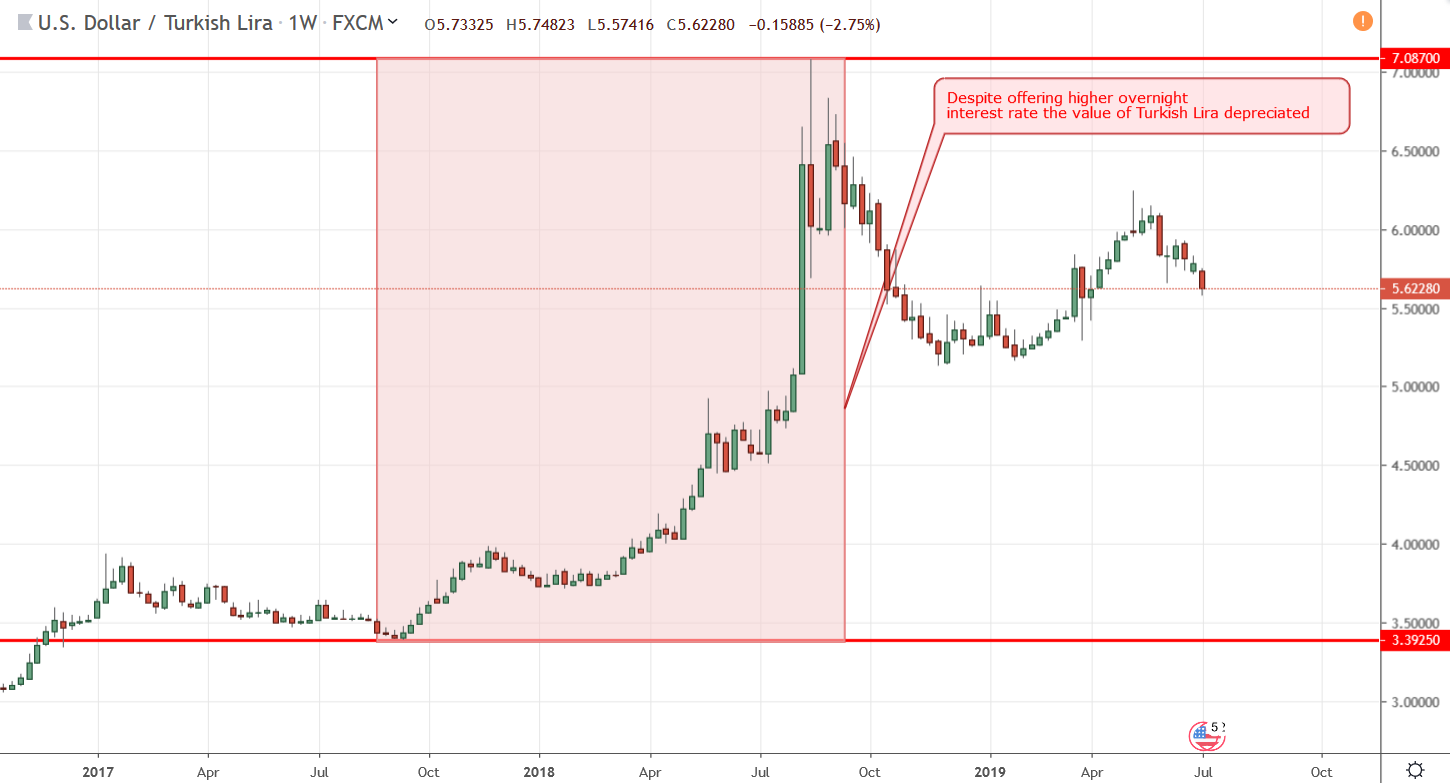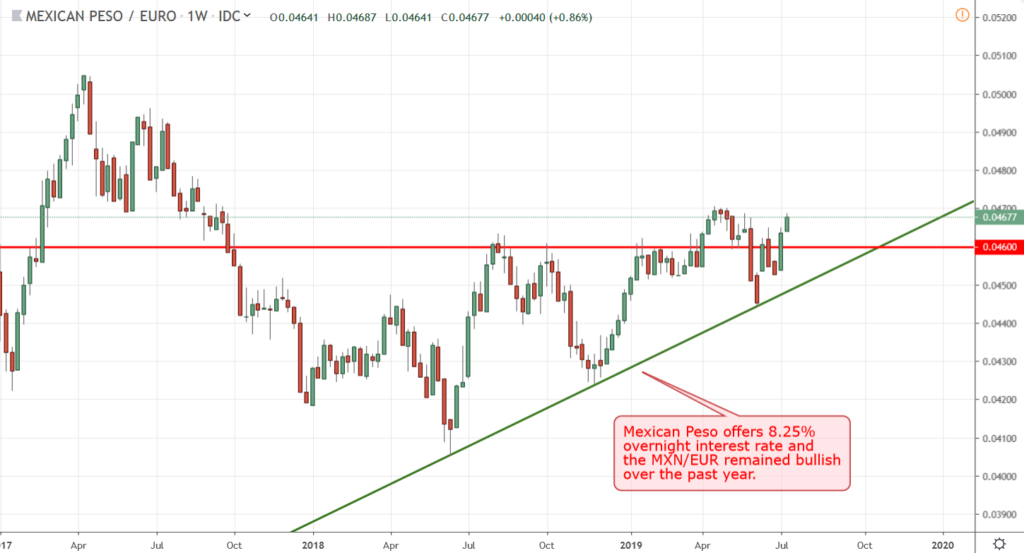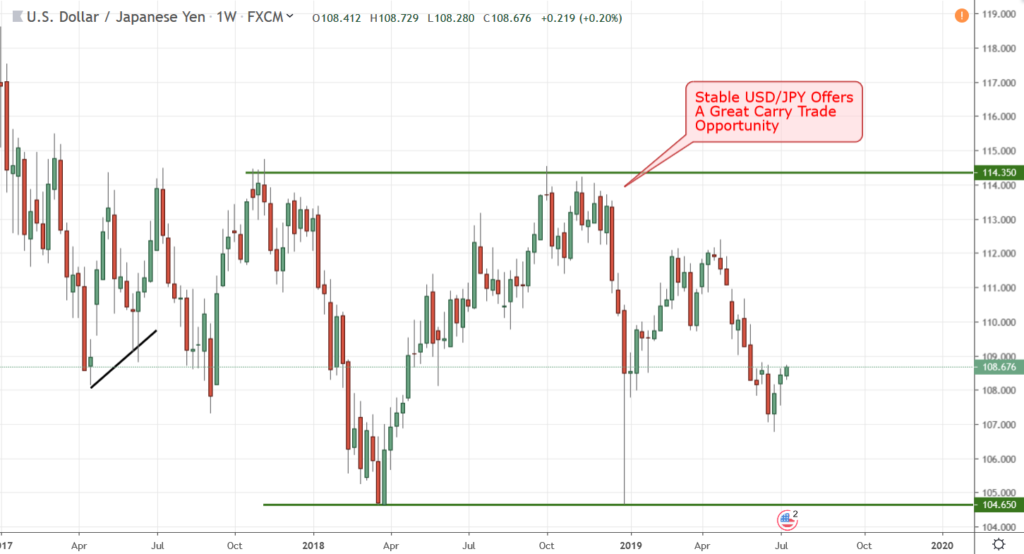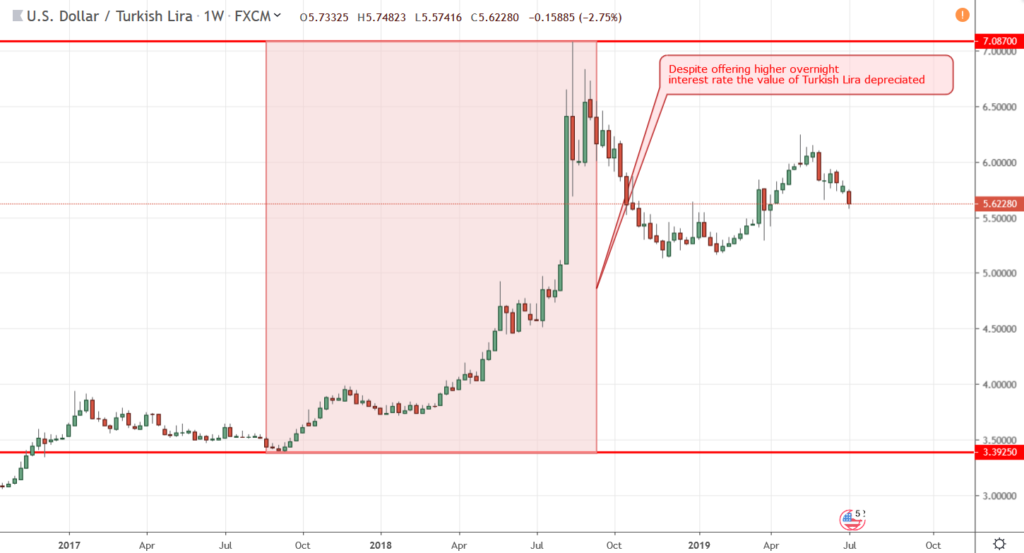3 min read
Scientist Discovered Why Most Traders Lose Money – 24 Surprising Statistics
“95% of all traders fail” is the most commonly used trading related statistic around the internet. But no research paper exists that proves this...

Most people starting Forex trading with technical analysis and graduate to combining macroeconomics fundamentals in their trading strategies. However, there is a very different style of Forex trading that involves earning money regardless of which way the market moves, and it is called carry trading.
While any student of finance will be able to instantly identify what carry trade means, let’s elaborate the concept briefly so that the amateur traders among us can get a pretty good idea about what we are getting into.
If you ever kept your Forex positions open overnight, you might have noticed that your broker might have given you a small change in the Swap column of your account statement. Often, your broker might have deducted such Swap interest charges as well.
Carry trade is basically having exposure to currency pairs that offer positive overnight interest rates in hope that if you hold the position long enough, the earnings from interest rate difference would turn out to be a substantial sum. Well, if you are brave enough to utilize leverage, which most carry traders do, holding Forex positions that pay Swap interest can be a lucrative strategy for trading Forex.
If you borrow or sell a currency that offers lower overnight interest rate and uses the proceed to buy another currency that offers a higher interest rate, your broker will usually pay you the interest rate difference.
Let us provide you with a practical example. Let’s say you are a citizen of Germany and you can borrow €100,000 from a local bank like the Commerzbank in Berlin at 0.5%. Given that currently (as of July 7, 2019), the European Central Bank offers an overnight rate of 0%, theoretically, it is possible to even borrow at a lower rate.
However, let’s assume you are a movie producer and currently living in Los Angeles, and have a bank account in the U.S. Since, the overnight interest rates offered by the Federal Reserve Bank is 2.5%, your bank in California, such as Wells Fargo, would be happy to pay you much higher rate than Commerzbank in Berlin. So, let’s assume that Wells Fargo pays you 2.5%.
Think about it, you can simply convert your €100,000 Euro to $112,258.16 USD (at the market rate of 1 EUR = 1.12258 USD on July 7, 2019) and deposit the entire sum in your Wells Fargo account. Doing so, you will end up earning an interest rate difference of 2.0% per year, which would amount to $2245.16.
Now, if you use 100:1 leverage, that $2245.16 could turn out to be $224,516.32 by the end of the year.
When you first think about it, Carry Trade could appear to be a no-brainer. Nonetheless, there are some inherent risks to carry trading. After all, the price of EUR/USD could go up and at the end of the year when you will have to convert your US Dollars back to Euro to pay back your bank in Berlin, the rate difference can wipe out all of your profits. With leverage, you can easily get a margin call long before the year is over!
That’s why major corporations involved in international trade need to hedge their future transactions to protect themselves from major currency price swings.
While you can Carry Trade and make a decent income from the interest rate difference, keep in mind that if the price of the currency pair goes against you, then you can also end up making a loss.
Before you can delve into carry trading, let’s review the current interest rates offered by major central banks around the world.
| Country | Currency | Interest Rate |
| United States | U.S. Dollar | 2.50% |
| United Kingdom | British Pound | 0.75% |
| Eurozone | Euro | 0.00% |
| Australia | Australian Dollar | 1.00% |
| Japan | Yen | -0.10% |
| Canada | Canadian Dollar | 1.75% |
| Mexico | Mexican Peso | 8.25% |
| Turkey | Turkish Lira | 25.00% |
Table 1: Overnight Interest Rates Offered by the Central Banks of Major Economies as of July 2019
From Table 1, you can see that the prospect of making profits from Carry Trade is still a pretty valid idea as some currencies like the Mexican Peso offers an 8.25% overnight interest rate.

Figure 1: MXN/EUR Remained Bullish Since 2018 and Offers Great Overnight Interest Rate
Since the European Central Bank (ECB) has kept its overnight interest rate at 0.00% for a long time, buying the MXN/EUR would theoretically offer a handsome 8.25% overnight interest rate. Another great example of a good pair to carry trade with would be the USD/JPY.

Figure 2: Stable Price of USDJPY Offers a Great Carry Trade Opportunity
Over the last year, the USDJPY price fluctuated between the support near 104.65 and the resistance around 114.35, representing only a 9.27% volatility. Given that the Bank of Japan (BoJ) is offering a -0.10% overnight interest rate compared to 2.50% by the U.S. Federal Reserve, going long on the USD/JPY pair would offer a great carry trade opportunity at the moment.

Figure 3: The Value of U.S. Dollar Went Up by 108.90% Against Turkish Lira in 2017-2018
However, nobody wants to Carry Trade U.S. Dollar vs. Turkish Lira (USD/TRY) despite the 22.5% interest rate difference between these two currencies. During 2017-2018, the value of USD/TRY jumped from 3.3925 to 7.0870, representing a 108.90% increase. So, if you borrowed funds at 2.5% from the U.S. and invested in Lira, you would lose a substantial amount despite the Lira’s higher overnight interest rate.
As you can see, there are more to carry trade than simply calculating the interest rate difference as geopolitics, macroeconomics, and other factors can often dictate the outcome a long-term carry trade.
In the days before the sub-prime mortgage crisis that turned into the worldwide The Great Recession, overnight interest rates around the world use to be pretty high. The Bank of England’s overnight rate was above 6.0% and even the Japanese housewives were making a killing with Carry Trade. However, we live in low inflation and low-interest rate environment now and as a result, the appeal of Carry Trade has faded.
Nonetheless, the concept of Carry Trade still remains a viable trading strategy if you are willing to apply it on any currency pair that offers a substantial return on investment and low risk of a directional movement against your open positions.

3 min read
“95% of all traders fail” is the most commonly used trading related statistic around the internet. But no research paper exists that proves this...

3 min read
Trendlines can be great trading tools if used correctly and in this post, I am going to share three powerful trendline strategies with you.

3 min read
Choosing the right trading journal is essential for traders wanting to analyze performance, refine strategies, and improve consistency. In this...